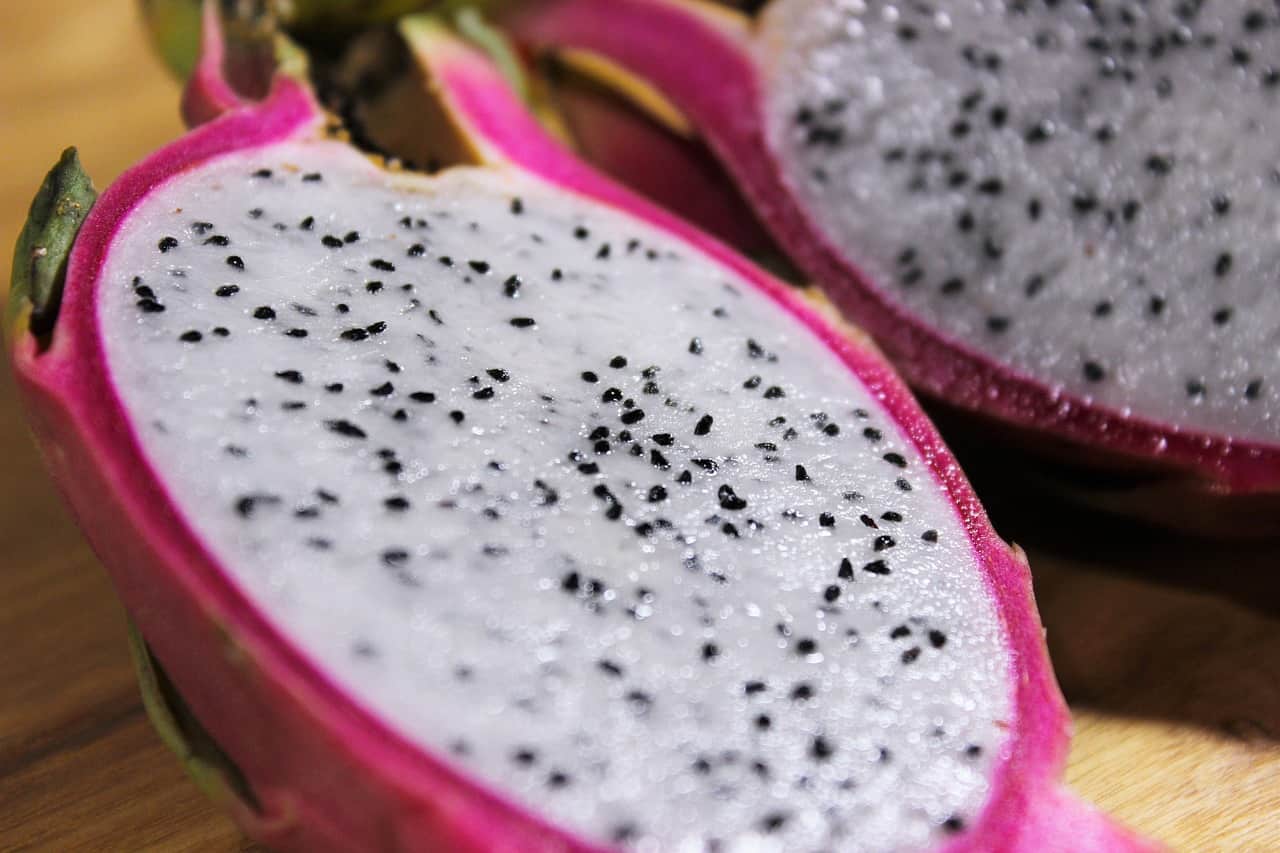Dragon fruit, also known as pitaya, is a fruit that has captured the hearts and palates of people around the world with its striking appearance and delightful taste. Mexico, in particular, has emerged as a significant player in the global dragon fruit market.
Mexican Dragon Fruit
Blog Post Content
In this blog, we’ll take you on a journey to explore the vibrant world of Mexican dragon fruit, including its taste, cultural significance, and the intricacies of dragon fruit farming in this beautiful country.
The Taste of Mexican Dragon Fruit
Mexican dragon fruit, often referred to as the ‘fire fruit,’ is as captivating in taste as it is in appearance. It comes in three primary varieties: red, white, and yellow. Each of these varieties offers a unique flavor profile.
- Red Dragon Fruit: The red-fleshed dragon fruit is the most common variety found in Mexico. Its flavor can be described as mildly sweet with subtle, refreshing notes, making it an ideal addition to fruit salads, smoothies, or enjoyed fresh on its own.
- White Dragon Fruit: This variety is less common but equally delicious. White dragon fruit has a sweeter, milder taste compared to the red one. It is often used to make beverages like dragon fruit lemonade or to add a unique twist to desserts.
- Yellow Dragon Fruit: The yellow variety is known for its tangy and slightly acidic flavor, which can be compared to a combination of kiwi and pineapple. It’s a popular choice for those who prefer a zesty kick in their fruit.
Mexican Dragon Fruit Culture
Dragon fruit has a rich cultural history in Mexico. It’s often associated with various myths and legends, especially among the indigenous communities. In some regions, the fruit is considered to be a symbol of good luck and prosperity.
The vibrant colors of dragon fruit are reflected in Mexican art, textiles, and even festivals. Some regions host dragon fruit festivals where locals and tourists come together to celebrate the harvest season, complete with music, dance, and, of course, dragon fruit dishes.
Dragon Fruit Farming in Mexico

Mexico’s climate and geography make it an ideal location for dragon fruit cultivation. The country’s diverse landscapes, from the tropical climates in the south to the arid regions in the north, provide a variety of growing conditions that suit different dragon fruit varieties.
Key aspects of dragon fruit farming in Mexico include:
- Varieties: Mexican farmers cultivate various dragon fruit varieties, with the red variety being the most prevalent. Yellow and white varieties are also grown in specific regions.
- Cultivation Zones: The major dragon fruit cultivation regions in Mexico include Baja California, Sonora, Sinaloa, Nayarit, Jalisco, and Michoacán. These regions offer the right climate and soil conditions for dragon fruit growth.
- Sustainable Practices: Many Mexican dragon fruit farmers are adopting sustainable and organic farming practices to minimize their environmental impact and deliver high-quality produce.
- Harvest and Export: Dragon fruit is usually harvested between May and December, with the peak season from June to September. Mexico exports a significant amount of dragon fruit to countries like the United States, Canada, and Europe.
What do you call dragon fruit in Mexico?

In Mexico, dragon fruit is commonly known as “pitaya.” The term “pitaya” is used to refer to various types of cacti fruit, including different varieties of dragon fruit, both the red and white-fleshed ones. While dragon fruit is a widely recognized name for this fruit globally, “pitaya” is the preferred term in Mexico and many other Spanish-speaking countries.
Certainly, here’s information on each of the topics you mentioned related to dragon fruit in Mexico:
Where to Buy Dragon Fruit in Mexico
You can find dragon fruit in Mexico in a variety of places, including:
- Local markets and supermarkets
- Street vendors and fruit stands
- Specialty fruit and produce stores
- Online marketplaces for fruit delivery
Dragon Fruit Season in Mexico
Dragon fruit is typically in season in Mexico from May to December, with the peak season running from June to September. During these months, you’ll find an abundance of fresh dragon fruit in local markets.
Dragon Fruit Price in Mexico
The price of dragon fruit in Mexico can vary depending on factors such as location, variety (red, white, or yellow), and the size of the fruit. On average, you can expect to pay between 20 to 50 Mexican pesos per kilogram of dragon fruit. Prices may fluctuate based on supply and demand.
Dragon Fruit for Sale in Mexico
You can purchase dragon fruit for sale in Mexico from the same sources mentioned in the “Where to Buy” section. Look for local markets, supermarkets, or even directly from farmers in dragon fruit-producing regions during the peak season.
Dragon Fruit Recipe from Mexico
Dragon fruit in Mexico is often enjoyed fresh or incorporated into various dishes. A popular recipe is “Ensalada de Fruta con Pitaya,” which is a fruit salad that includes dragon fruit, other tropical fruits, lime juice, and a sprinkle of chili powder for a spicy twist. It’s a delightful and refreshing dish commonly served during dragon fruit season.
Is Dragon Fruit Edible in Mexico?
Yes, dragon fruit is absolutely edible in Mexico. It is a beloved and widely consumed fruit in the country, known for its unique appearance, refreshing taste, and versatility in various culinary preparations.
Dragon Fruit in Spanish
In Spanish, dragon fruit is referred to as “pitaya.” The term “pitaya” is used to describe different types of cacti fruit, including dragon fruit. So, if you’re in Mexico and want to ask for dragon fruit, simply say “pitaya,” and you’ll be understood.

